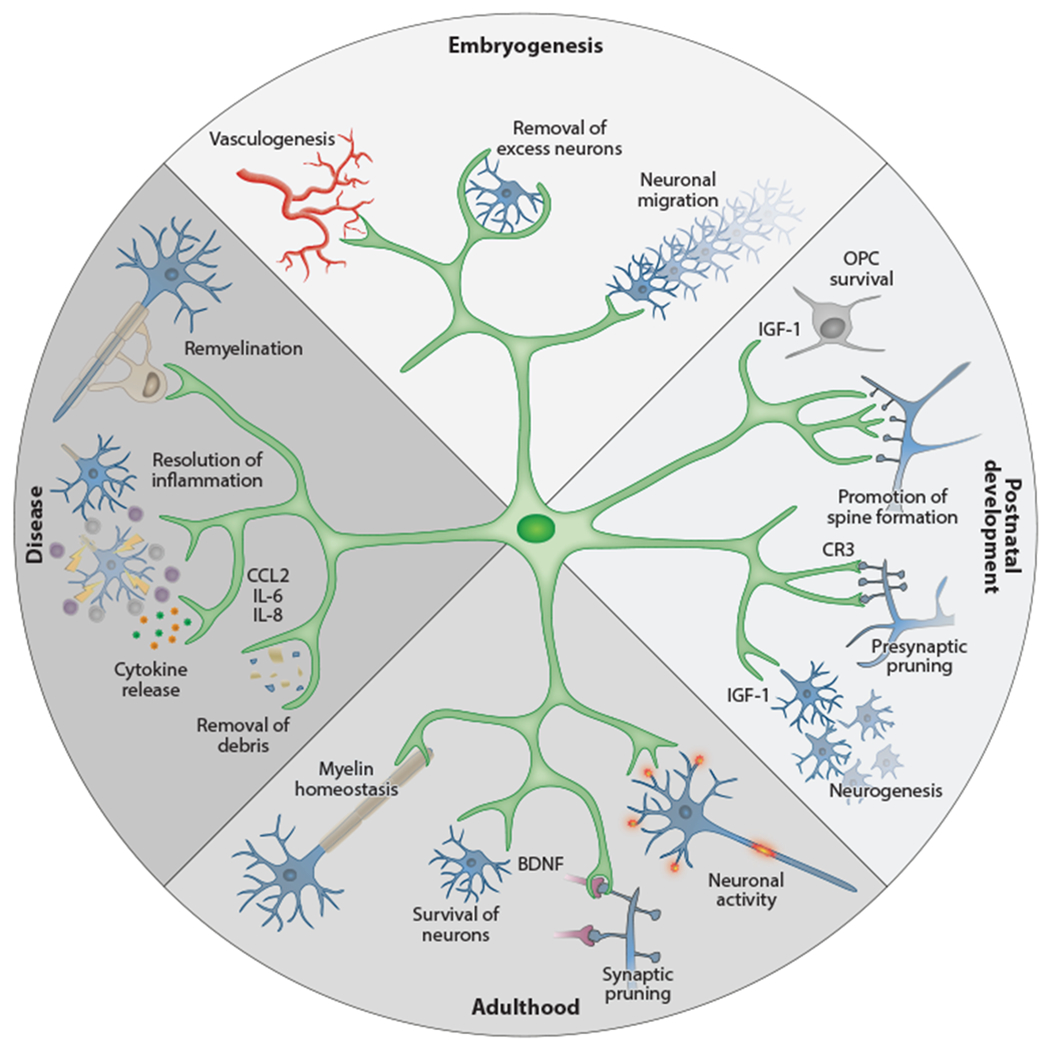Figure 2.

Physiological functions of microglia during development and adulthood. Microglial cells show a remarkable diversity of functions at different stages of ontogeny. During embryogenesis they are involved in promoting vessel development and in the removal of superfluous neurons, and they guide neuronal migration. At postnatal time points, however, they support OPC survival and development (e.g., by IGF-1 production), support neurogenesis in defined brain areas, and promote neuronal spine formation. After finalization of myelinization and establishment of neuronal circuits, their functions shift to ensure the survival of neurons (e.g., by production of BDNF) and oligodendrocytes. Upon perturbation, microglia transform their homeostatic program to an activated state that involves enhanced phagocytosis and production of soluble factors such as cytokines, chemokines, and surface markers. These mechanisms allow the removal of cellular debris and promote regeneration (e.g., remyelination). Abbreviation: OPC, oligodendrocyte precursor cell.
